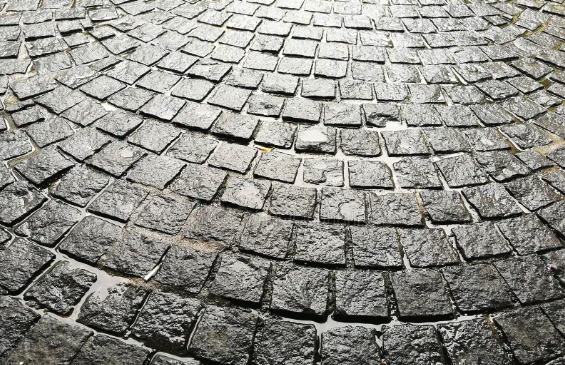What is the downfall of stamped concrete?

Unveiling the Downfalls of Stamped Concrete: Balancing Aesthetic Appeal and Practicality
Stamped concrete, often heralded for its ability to mimic the appearance of more expensive materials like brick, stone, or tile, has gained significant popularity in the world of construction and landscaping. This versatile technique involves pressing patterns into freshly poured concrete, creating intricate designs and textures. While stamped concrete offers numerous benefits, it is not without its share of drawbacks that potential users and homeowners should carefully consider.
Durability and Longevity:
One of the primary concerns surrounding stamped concrete is its durability and longevity compared to traditional materials like natural stone or pavers. While concrete is inherently strong, its surface can be susceptible to wear and tear, especially in high-traffic areas. Over time, the stamped patterns may fade or wear away, revealing the plain concrete beneath. This can compromise the aesthetic appeal that initially attracted homeowners to stamped concrete.
Maintenance Challenges:
Stamped concrete requires regular maintenance to preserve its appearance. Sealing the surface is crucial to protect it from water infiltration, freeze-thaw cycles, and stains. However, even with proper sealing, stamped concrete may develop cracks, which can be exacerbated by the shifting and settling of the underlying ground. Repairing cracks can be challenging and may disrupt the uniformity of the stamped pattern.
Slippery When Wet:
One notable downfall of stamped concrete is its tendency to become slippery when wet. The textured patterns that contribute to its visual appeal can also trap water on the surface, creating a hazardous situation, especially in outdoor areas like pool decks or patios. Homeowners need to exercise caution or consider applying anti-slip coatings to mitigate this risk.
Color Fade and Inconsistency:
The coloration of stamped concrete is achieved through integral pigments or surface-applied colorants. However, over time, exposure to sunlight, harsh weather, and foot traffic can cause color fading and inconsistencies. This gradual change in color can lead to a mismatch between the stamped sections and any additional repairs or modifications, resulting in an uneven appearance.
Cost Considerations:
While stamped concrete is often touted as a more cost-effective alternative to genuine stone or brick, the initial savings might be overshadowed by long-term maintenance costs. The need for regular resealing and potential repairs can add up over the years, impacting the overall budget. Moreover, if repairs are required, achieving a seamless blend with the existing stamped pattern can be challenging.
Lack of Authenticity:
While stamped concrete can replicate the look of various natural materials, it does not truly replicate their feel, texture, or authenticity. Genuine materials like natural stone possess unique variations and nuances that give them character and charm. Stamped concrete, despite its impressive visual imitation, cannot completely replicate these subtleties.
Complex Installation:
The installation of stamped concrete requires skill and precision. Achieving uniform patterns and textures requires meticulous workmanship, and even a small error can disrupt the overall appearance. Improper installation can lead to issues like uneven patterns, surface imperfections, or premature cracking.
Limited Customization:
Though stamped concrete offers a range of patterns and textures, the level of customization may still fall short for those seeking highly specific or intricate designs. In contrast, natural materials like stone or brick can be individually selected to create unique aesthetics that suit the homeowner’s preferences.
Environmental Considerations:
Concrete production is associated with a significant carbon footprint due to the energy-intensive manufacturing process and the emissions generated during production. While stamped concrete might seem like an eco-friendly alternative to mined natural materials, it’s essential to consider the broader environmental impact of concrete usage.
In conclusion, while stamped concrete has revolutionized the world of decorative and architectural concrete, it comes with several notable downsides that cannot be overlooked. Its susceptibility to wear, color fading, slippery surfaces, and the challenge of maintenance are concerns that property owners must weigh against the aesthetic benefits. Before opting for stamped concrete, careful consideration of these drawbacks and a thorough assessment of long-term costs and benefits are essential to make an informed decision that aligns with the desired outcome for both aesthetics and functionality.




